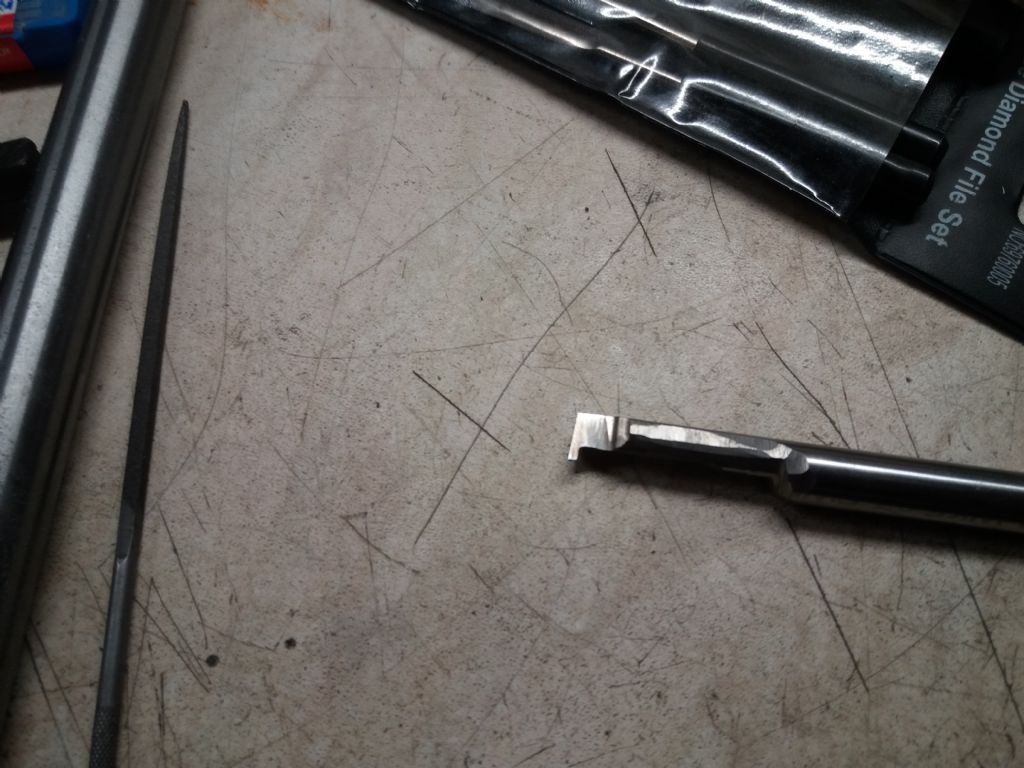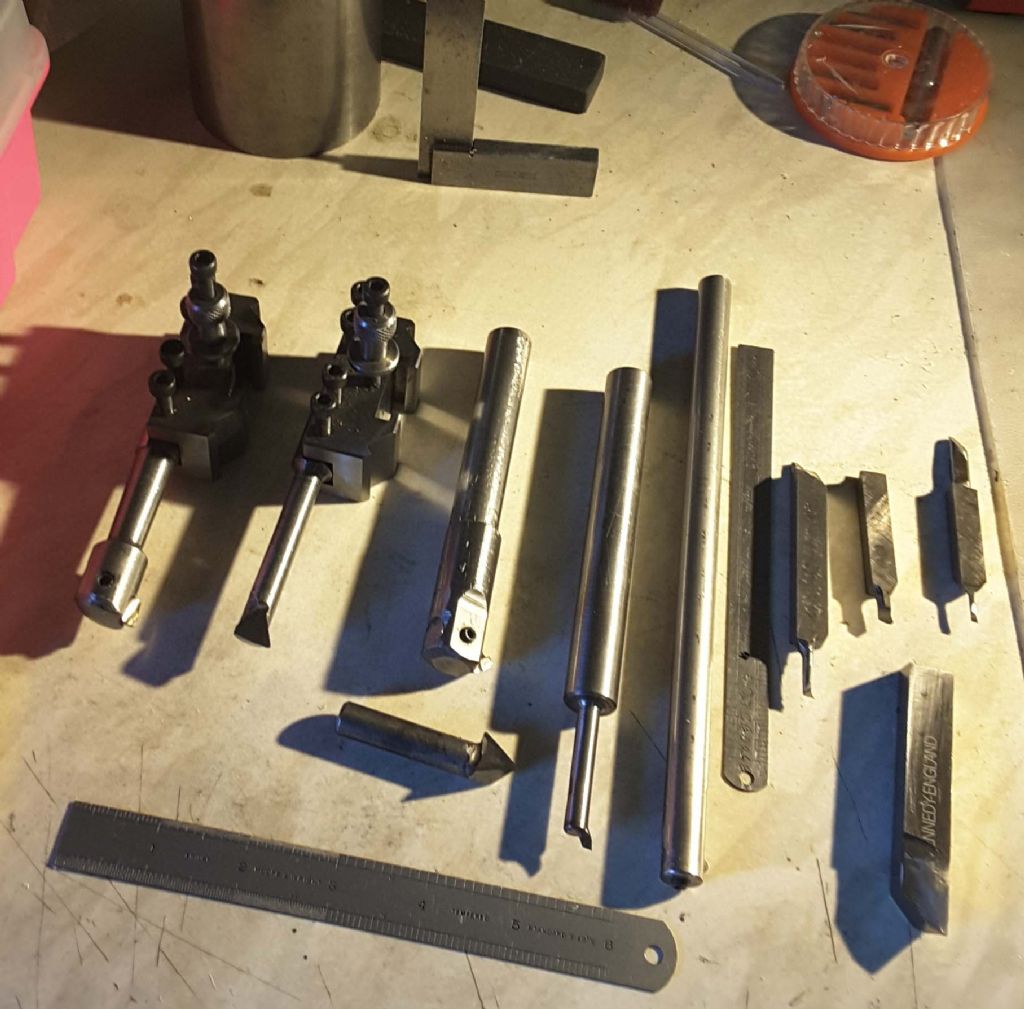If you lock the spindle and tighten the chuck a little more firmly than usual, then threading away from the headstock in reverse is not dangerous. Small cuts will be made and you have time to think what you are doing, rather than being in a panic. I actually have a locking device which fits most of the chucks on the museum's Smart & Brown model A, but producing the 1 1/2 X 8 thread for the Atlas chuck backplate used an unmodified chuck. I still ran in reverse, and with a nice tight chuck and care with the cutting forces, all was well.
As for the grooving tool being usable, I would say yes, better if it was narrower than the thread. Tighten up the compound gibs and take up the backlash towards the head. Zero the scale and then you can move the compound to make up the width difference. If you like, you can alternate the cuts as long as you back off enough to be able to remove any backlash each time. The grooving tool must clear the helix angle of the thread.
Edited By old mart on 30/03/2020 18:05:42
Edited By old mart on 30/03/2020 18:07:39
Anonymous.



 with a qcgb . I have cut external threads many times but never really attempted internal threads, my Lathe can be reversed with switch but the spindle nose is threaded so it might unscrew? . I was just wondering if grooving tools could be used or if there was something better? I have a P horn internal grooving tool but haven't had much success with it as the shank has been ground a away and it vibrates so I don't really use it. threading with it is impossible
with a qcgb . I have cut external threads many times but never really attempted internal threads, my Lathe can be reversed with switch but the spindle nose is threaded so it might unscrew? . I was just wondering if grooving tools could be used or if there was something better? I have a P horn internal grooving tool but haven't had much success with it as the shank has been ground a away and it vibrates so I don't really use it. threading with it is impossible




